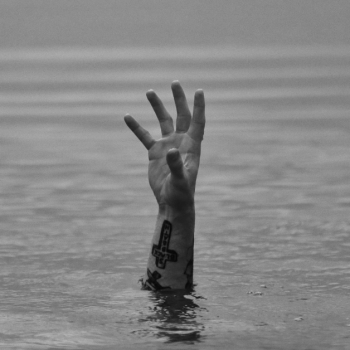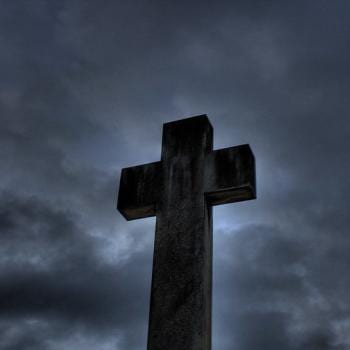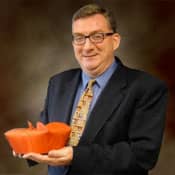As a historian, cemeteries have always held a special fascination for me. The older, the better. New York has more than its share of fascinating cemeteries, none more fascinating than Calvary Cemetery in the Woodside section of Queens. It was founded by the Diocese of New York in 1849, the year that new burials were banned in an overcrowded Manhattan. At the time, Queens was largely unsettled farmland, an ideal spot for a cemetery. Today the four sections composing Calvary are surrounded by bustling, thriving neighborhoods. Inside, the crosses, mausoleums, and statues host the final resting place for some of history's most interesting figures. Sometimes it can be surprising to find out who's buried where!
With more than three million interments, Calvary is the largest cemetery in the United States. As one might expect, it's home to many of Catholic New York's leading historical figures. Father Edward McGlynn, a famed pastor and social activist in late 19th-century New York, is buried there. He was originally supposed to be buried in the Bronx's Woodlawn Cemetery, and a statue of him was erected there, but at the last minute, the Archdiocese of New York intervened, insisting that a Catholic priest must be buried in a Catholic cemetery. (His statue's still in the Bronx, though.) In addition, there are countless graves for the thousands of priests and nuns who built up the Church in New York City and beyond.
In a cemetery as old as Calvary, one might expect to find a generous share of figures from America's wars. There are twenty-five recipients of the Congressional Medal of Honor, many of them from the Civil War, but some as recent as Vietnam. In the cemetery's oldest section is a monument to the Irish-American soldiers, many recently arrived immigrants, who gave their lives for the Union. There are also five Civil War generals, including James Rowan O'Beirne, who sat at Lincoln's deathbed after the shooting in Ford's Theater. (When the historical scene was being painted, he missed the appointment, and his chance to be immortalized on canvas.)
There are plenty of politicians, too, many of them associated with Tammany Hall, the model for all urban political machines past and present. A number of New York City mayors are also buried there, including one with the unlikely name of Hugh Grant. Elected as the second Catholic mayor in 1889, at 31 he's also the youngest mayor, ever. Al Smith, the first Catholic to run for President in 1928, is there and so are the Wagners: Senator Robert F. Wagner, Mayor Robert F. Wagner, and Robert F. Wagner III. Until the consolidation of New York City in 1898, Long Island City was a separate entity. Its last mayor, Patrick "Battle-Axe" Gleason, is buried at Calvary.
Calvary is almost a Who's Who of Hollywood's Silent Era. Nita Naldi, one of Rudolph Valentino's leading ladies, was born Mary Dooley in New York City, attending Catholic schools there and in New Jersey. Robert Harron, one of the leading stars of the 1910s, is buried there, the victim of a tragic gunshot wound. James Murray, one of the era's last stars, faded into obscurity with the advent of sound. Actress and saloon owner Texas Guinan (born Mary Louise Cecilia Guinan in Waco), famous for greeting customers, "Hello, suckers!" is also there.
For those interested in the history of American crime, Calvary holds wonders. Buried here are a plethora of crime bosses and hit men, including Gaetano "Tommy" Lucchese, Boss of the Lucchese crime family; Black Hand leader Ignazio "Lupo the Wolf" Lupo; Giuseppe "Joe the Boss" Masseria, head of the Genovese crime family. From the other side of the spectrum there's Giuseppe Petrosino, the first Italian-American detective in the New York Police Department. A pioneer in the fight against organized crime, he was killed in Sicily on police business in 1909.
Sports fans also have something to gain from a walk through Calvary. Two Hall of Famers are buried there: "Wee Willie" Keeler, right-fielder for several New York teams (including the New York Highlanders, now the Yankees), is famous for the adage "Hit 'em where they ain't." "Smiling Mickey" Welch, baseball's first pinch hitter, finished his career with the New York Giants in 1892. Irish-born Olympic Gold Medalist Martin Sheridan won five gold medals for track and field between 1904 and 1908. There's also Brooklynite Jim Sheridan, who played two games for the New York Mutuals in May 1876.
Two more Calvary residents who deserve to be mentioned are Irish-born Annie Moore, the first immigrant to enter Ellis Island in 1892, and author Claude McKay, who converted to Catholicism while living in Harlem. A walk through Calvary Cemetery, then, is not an exercise in morbidity, but a direct encounter with some of history's great (and not so great) figures. There's something there for everyone: Civil War buffs, political aficionados, lovers of cinema, sports fans, as well as those with an interest in the less admirable aspects of modern urban life. Ultimately, it's a celebration of those who have gone before us, and a reminder that all flesh is as grass (1 Pt. 1:24).
12/2/2022 9:05:40 PM





